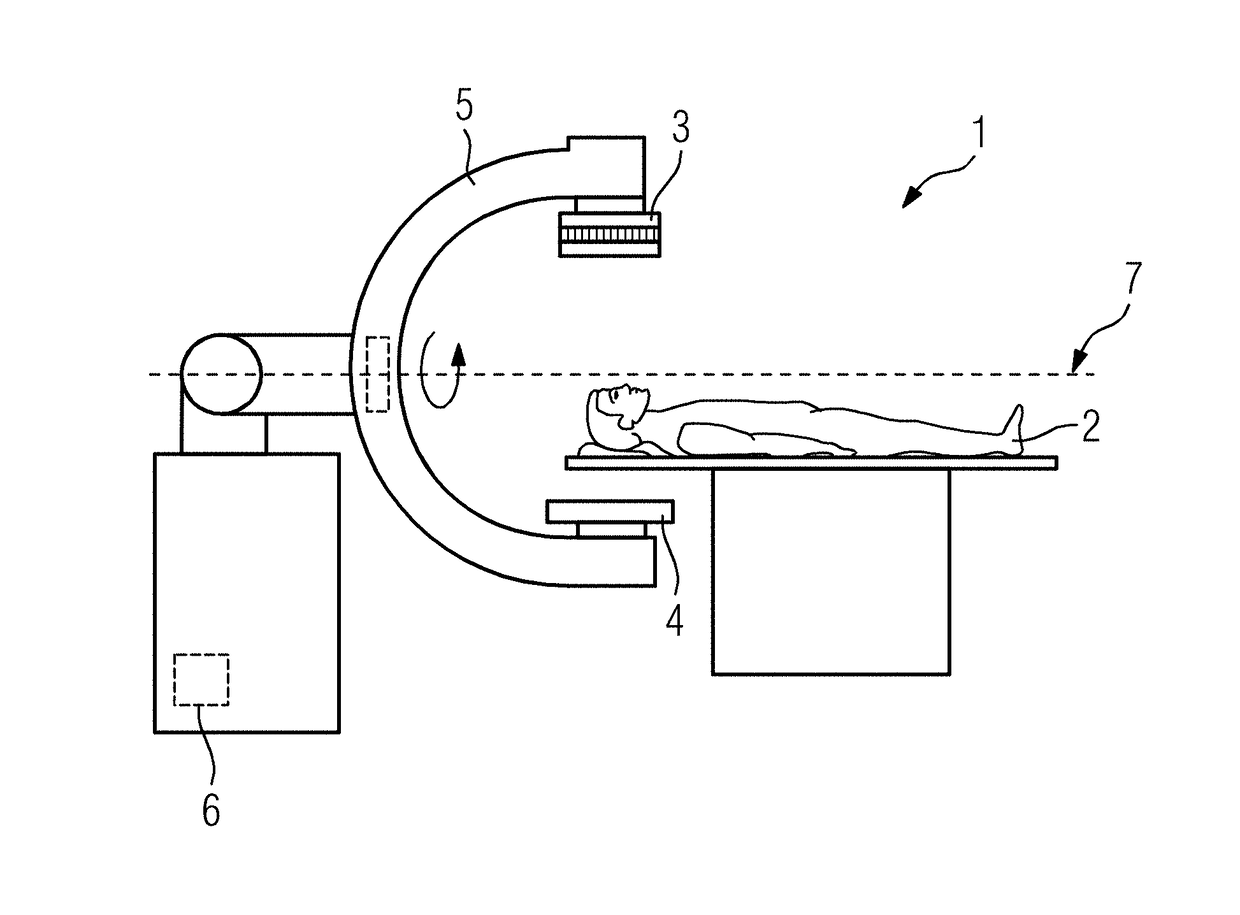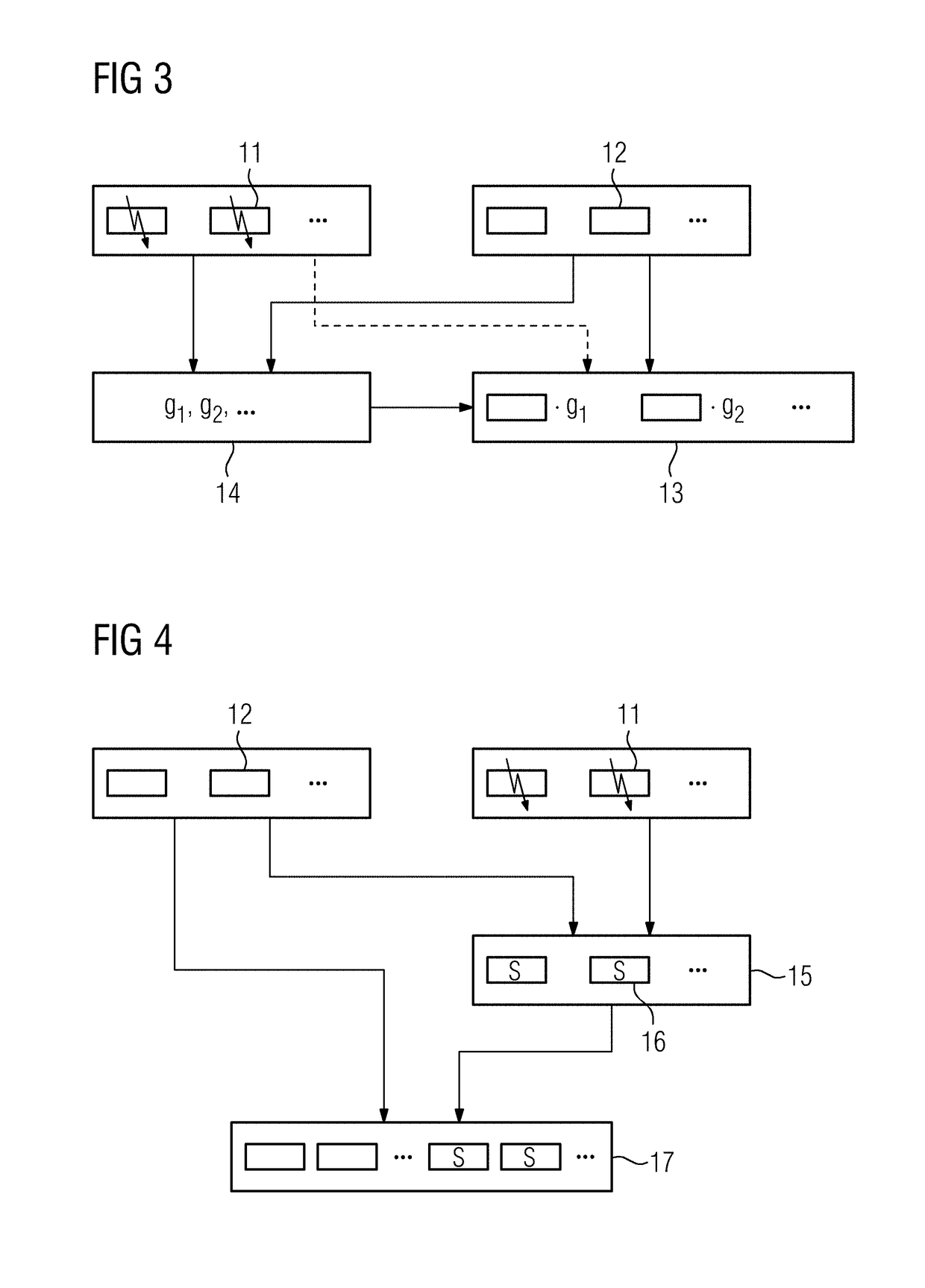Method for determining a three-dimensional image dataset by an x-ray device
a three-dimensional image and dataset technology, applied in the field of three-dimensional image dataset determination by an x-ray device, can solve the problems of arcing, short-circuited x-ray tubes, and particularly problematic arcing, so as to reduce image artifacts
- Summary
- Abstract
- Description
- Claims
- Application Information
AI Technical Summary
Benefits of technology
Problems solved by technology
Method used
Image
Examples
Embodiment Construction
[0041]FIG. 1 depicts an X-ray device 1, which is able to record the projection images of an examination object 2 from a plurality of recording angles. To this end, a radiation source 3 and a radiation detector 4 are secured to a movement device 5, which is depicted as a C-arm in the example. Alternatively, the movement device 5 may be a gantry of a computed tomography scanner.
[0042]A control device 6 may control the movement device 5 in order to rotate the radiation source 3 and the radiation detector 4 about a central axis 7 and hence about the examination object 2 and hence to set different recording angles for the acquisition of projection images. Here, it is possible that with some of the projection images arcing may occur in the radiation source 3, in particular, in an X-ray tube of the radiation source. During this arcing, the intensity of the X-rays provided is reduced. This may result in underexposure and hence reduced contrast for the individual projection image.
[0043]If a ...
PUM
 Login to View More
Login to View More Abstract
Description
Claims
Application Information
 Login to View More
Login to View More - R&D
- Intellectual Property
- Life Sciences
- Materials
- Tech Scout
- Unparalleled Data Quality
- Higher Quality Content
- 60% Fewer Hallucinations
Browse by: Latest US Patents, China's latest patents, Technical Efficacy Thesaurus, Application Domain, Technology Topic, Popular Technical Reports.
© 2025 PatSnap. All rights reserved.Legal|Privacy policy|Modern Slavery Act Transparency Statement|Sitemap|About US| Contact US: help@patsnap.com



